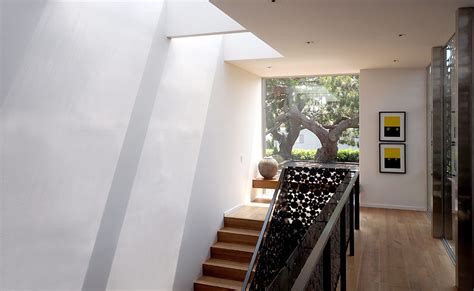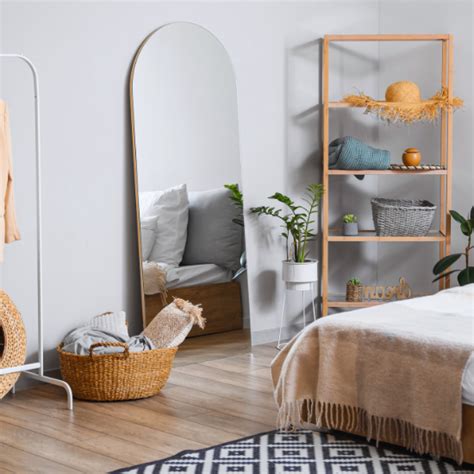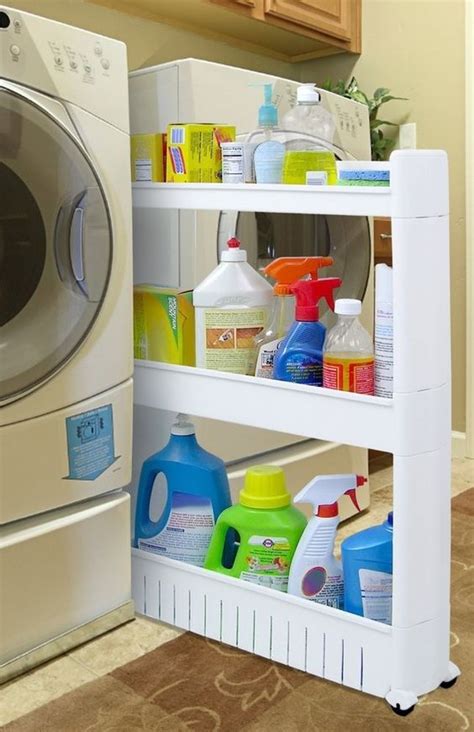Imagine stepping into a confined area where every inch of space is skillfully transformed into an expansive haven. Visualize a realm where the walls seem to dissolve, making the room appear larger than its modest dimensions suggest. Creating an illusion of spaciousness in small spaces is an art, requiring astute planning and clever design choices.
Maximizing natural light: A key aspect of making a compact space appear larger is harnessing the power of natural light. When sunlight gracefully seeps through windows, it not only illuminates the room but also creates a sense of openness. Consider using sheer curtains or blinds that allow daylight to filter through, imparting a softness to the environment while enabling a connection with the outdoors.
Strategic color schemes: Color has the remarkable ability to influence perception, making it a vital tool when it comes to expanding small spaces. Opt for light hues, such as pale blues, soft greens, or delicate pinks, as they reflect light and create a sense of airiness. Additionally, incorporating a monochromatic color scheme throughout the room can create a seamless flow, erasing the boundaries and visually expanding the space.
Maximizing Natural Light: The Power of Illumination

In this section, we will explore the importance of maximizing natural light in order to create a sense of spaciousness and openness in your living space. By harnessing the power of illumination, you can transform your small area into a bright and airy environment that feels significantly larger.
When it comes to optimizing natural light, strategically placing mirrors throughout the room can work wonders. Mirrors have the ability to reflect and amplify natural light, making the space appear brighter and more expansive. Consider positioning mirrors opposite windows or in areas where light is likely to hit, such as near a skylight or glass door. This simple yet effective technique will give the illusion of additional windows and help to bounce light around the room.
Another essential aspect of maximizing natural light is choosing the right window treatments. Opt for sheer or light-colored curtains, blinds, or shades that allow plenty of sunlight to filter through. Heavy drapes and dark-colored window coverings tend to absorb light, creating a dimmer and smaller ambiance. Additionally, keeping windows clean and unobstructed by furniture or clutter will optimize the amount of natural light that enters your space.
Utilizing reflective surfaces beyond mirrors can also enhance the brightness of your room. Consider incorporating glossy finishes on furniture, such as a glass coffee table or mirrored side tables. These surfaces will not only add a touch of elegance to your decor but also reflect natural light, creating a more open and spacious atmosphere.
Last but not least, integrating indoor plants into your small space can greatly contribute to maximizing natural light. Plants with glossy leaves, such as rubber plants or peace lilies, can help to bounce light around the room and add a refreshing touch of nature to your living environment. Additionally, strategically placing plants near windows or on shelves can create a visual connection between the indoors and outdoors, making the room feel more expansive.
| Key Points to Remember: |
|---|
| 1. Place mirrors to reflect and amplify natural light. |
| 2. Opt for sheer or light-colored window treatments to allow sunlight to filter through. |
| 3. Use reflective surfaces like glass or mirrors on furniture to enhance brightness. |
| 4. Incorporate indoor plants with glossy leaves to bounce light and create a connection with the outdoors. |
Color Psychology: Selecting the Ideal Palette to Enhance the Perception of Space
In the quest to create an environment that feels more spacious, one often overlooks the power of color. The right color palette can significantly impact the perceived size of a room, making it appear larger and more open. By understanding the principles of color psychology and selecting the perfect hues, you can transform even the smallest space into an expansive oasis.
1. Neutral Tones: Utilize neutral shades such as whites, creams, and light grays as the foundation of your color palette. These colors reflect light, instantly brightening up the room and creating an illusion of airiness. Consider incorporating warm undertones to add depth and warmth without overwhelming the space.
2. Cool Blues and Greens: Incorporating cool tones like blues and greens can evoke a sense of tranquility and openness. Light shades of these colors create a calming effect while visually expanding the room. Whether used as accents or as the main color scheme, these hues can add a refreshing touch that enlarges the perceived space.
3. Pastel Hues: Embrace the nostalgia and elegance of pastel colors. Soft pinks, muted yellows, and gentle lavenders can create a delicate ambiance that gives the illusion of a larger space. These hues are particularly effective when used on walls, furniture, or accessories to foster a sense of lightness and airiness in the room.
4. Monochromatic Scheme: A monochromatic color scheme, using varying shades of a single color, can elongate the walls and provide a seamless flow within the room. By using lighter and darker tones of one color family, you create a harmonious environment that visually expands the space. This approach also adds depth and interest without overwhelming the room.
5. Strategic Contrast: While light, neutral colors are the foundation, incorporating strategic pops of contrasting hues can add interest and depth to the room. By selecting bold accents in key areas, such as artwork, pillows, or rugs, you draw the eye and divert attention away from the limited square footage. This technique creates a focal point and distracts from the actual size of the space.
When choosing colors for a small room, remember to consider the natural light available and how it interacts with the hues you select. Experimenting with color swatches and considering the room's purpose will ultimately lead you to the perfect palette, transforming your small space into an inviting, more expansive sanctuary.
Mirrors: The Magical Illusion of Space Expansion

Discover the captivating impact of mirrors on your living environment. Harnessing the power of reflection, mirrors create a fascinating optical illusion that can make any area appear more expansive. Explore the transformative qualities of mirrors in this section as we delve into their ability to enhance the perceived size and depth of a space.
- Reflection: The Key to Amplification
- Expanding Horizons with Mirrors
- Maximizing Space with Mirrored Walls
- Strategic Placement: Creating Depth and Dimension
- Multi-dimensional Magic: Mirrors and Lighting
- Expanding Beyond the Wall: Mirrored Furniture and Accents
- Illusion of Continuity: Mirrors in Transitional Spaces
- Avoiding Overwhelm: Balance and Proportion
Embark on a journey of illusions as we explore the remarkable potential of mirrors to create a sense of spaciousness in any room. Elevate your design game with these ingenious mirror tricks that will have you experiencing the magic of space expansion firsthand.
Smart Furniture Selection: Clever Solutions for Compact Living
In this section, we will explore an array of ingenious furniture choices that can revolutionize the way you utilize your limited living space. By carefully selecting smart furniture pieces, you can maximize every square inch without compromising on comfort or style.
A well-thought-out furniture selection can significantly enhance the functionality of your small living area. One key strategy is to opt for multi-purpose furniture that serves dual roles, such as a coffee table with built-in storage compartments or a sofa that can transform into a bed. This clever approach allows you to make the most of limited space without cluttering it with unnecessary pieces.
Another smart solution for small living is to choose furniture that can easily be folded or collapsed when not in use. This folding functionality enables you to create additional space whenever needed, offering flexibility and adaptability to your compact room. Folding dining tables, collapsible chairs, and wall-mounted desks are excellent examples of such space-saving alternatives.
In addition to multifunctional and collapsible furniture, utilizing vertical space is key to optimizing a small living area. Look for wall-mounted shelves, floating cabinets, and hanging organizers that can provide additional storage without occupying valuable floor space. These vertical elements not only offer practical storage solutions but also create an illusion of a larger, more expansive room.
Furthermore, light-colored furniture can significantly contribute to an airy and spacious atmosphere. Opt for pieces in neutral tones or bright shades that reflect natural light, creating an illusion of openness and brightness in even the tiniest spaces. Additionally, transparent furniture, such as glass or acrylic tables, can give the impression of an uncluttered and visually unobstructed room.
Lastly, don't underestimate the power of modular furniture systems. These flexible and customizable designs allow you to adapt your furniture arrangement to suit your changing needs. With modular furniture, you can effortlessly reconfigure your layout, adding or removing components as required, ensuring that every inch of your small living space is utilized efficiently.
In summary, by thoughtfully selecting smart furniture options that serve multiple functions, can be folded or collapsed, make use of vertical space, feature light colors, and offer modularity, you can transform your small living space into a chic and functional sanctuary. With these clever solutions, your compact room will feel open, inviting, and much more spacious than its physical dimensions suggest.
Creative Storage Solutions: An Organized Space for a Larger Perception

Discover innovative storage solutions that will revolutionize the way you perceive and utilize your living environment. By implementing efficient organization techniques and thinking outside the box, you can maximize the available space in your home and create a larger and more expansive atmosphere.
Unconventional Storage Ideas:
Consider unconventional storage ideas to optimize the space in your home. From utilizing vertical space with floor-to-ceiling storage units to incorporating hidden storage compartments within furniture, there are endless possibilities to creatively make your space more organized and visually appealing.
Maximizing Closet Space:
Transform your closet into an organized oasis by utilizing space-saving solutions. Install hanging organizers, shelves, and hooks to fully optimize vertical space. Utilize hangers that are specifically designed to hold multiple items, making the most of every inch available.
Dual-Function Furniture:
Invest in furniture pieces that serve multiple purposes to save space and enhance the overall organization. From sofa beds that provide extra sleeping space to ottomans with hidden storage compartments, dual-function furniture can help declutter your living area while maximizing its functionality.
Utilizing Wall Space:
Take advantage of your wall space by incorporating shelves and wall-mounted storage units. This not only frees up valuable floor space but also adds a visually appealing element to your decor. Display your favorite books, plants, or decorative items to create a sense of openness and personalization.
The Power of Containers:
Invest in a variety of containers that can be easily stacked and stored. Whether it's clear plastic bins, woven baskets, or stylish storage boxes, containers can effortlessly organize your belongings while giving your space a cohesive and clutter-free appearance.
By applying these creative storage solutions, you can transform your small space into an organized and visually stimulating environment, giving the illusion of a larger and more expansive room.
FAQ
What are some tips for making a small room feel bigger?
There are several tips that can make a small room feel bigger. Firstly, using light colors on the walls and ceiling can create an illusion of space and brightness. Secondly, maximizing natural light by minimizing window treatments and using mirrors can help to open up the room. Thirdly, decluttering the space and using multi-functional furniture can make the room feel more spacious. Finally, creating visual continuity by using the same flooring throughout different areas of the house can also give the illusion of a larger space.
How can I make a small bedroom appear larger?
If you have a small bedroom and want to make it appear larger, there are a few tricks you can try. Firstly, choose a light color scheme for the walls and bedding to create an airy and open feel. Secondly, opt for furniture with a minimalist design to avoid cluttering the space. Thirdly, incorporate storage solutions like floating shelves or under-bed storage to keep the room organized. Additionally, using large mirrors on the walls can add depth and make the room feel bigger. Lastly, utilizing natural light and keeping window treatments minimal can also enhance the perceived size of the bedroom.
Are there any specific furniture arrangements that can make a small living room feel bigger?
Yes, there are certain furniture arrangements that can help maximize space in a small living room. Firstly, consider placing the largest piece of furniture against the longest wall to create a sense of openness. Secondly, opt for furniture with exposed legs, as this can create a feeling of lightness and openness. Additionally, arranging furniture in a way that allows for easy circulation throughout the room can prevent a cramped and crowded feel. Lastly, creating functional zones within the living room by using rugs or room dividers can help define different areas and make the space feel larger.



